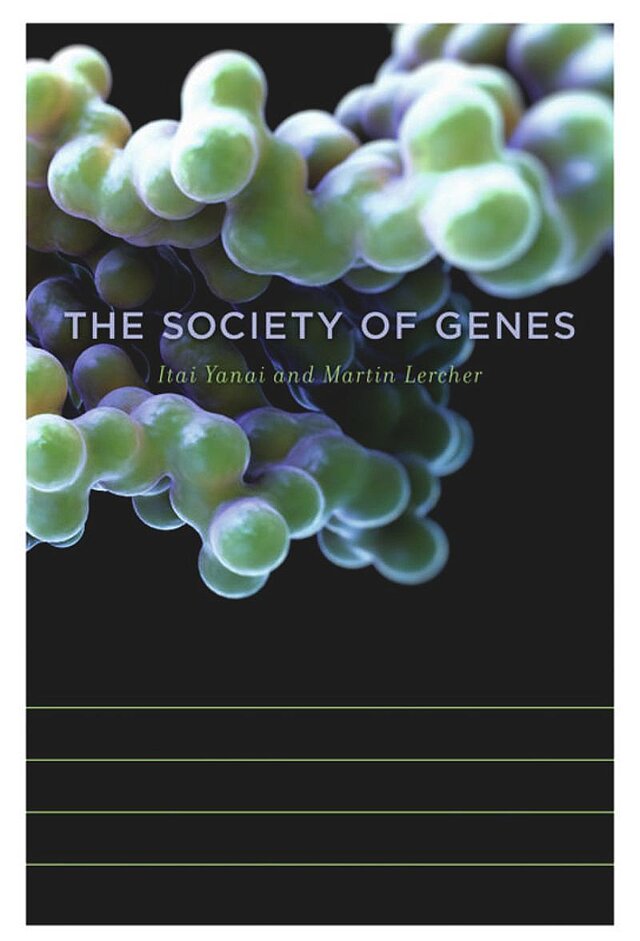Computational Cell Biology
The research group for Computational Cell Biology is located in the Institute for Computer Science, but also belongs to the Department of Biology. Our work is at the interface between Biophysics, Biology, and Computer Science. We develop computer models to describe quantitatively the physiology and growth of biological cells and organisms. Our models are fully mechanistic, i.e., the calculations are based exclusively on the laws of physics and chemistry; however, at least for now, the set of available processes is constrained by what evolutionary history has provided.
How do cells organize the concentrations of their many components? How does thermodynamics influence cellular and organismal design and function? How do cellular networks change in response to environmental changes and in the course of evolution? To what extent are changes the result of adaptation to changing environments, to what extent are they driven by chance events? These questions are central to much of our research.
We view mechanistic models as a quantitative, comprehensive summary of our understanding of biological systems based on their physics and chemistry. Our research projects revolve around the following topics:
-
molecular models of cellular metabolism, including the influence of metabolite concentrations on enzyme kinetics and thermodynamics;
-
molecular models of the balanced growth of individual cells;
-
multi-scale models of the function and growth of complete organisms, currently focusing on plants;
-
artificial intelligence approaches to predict properties of enzymes and transporters (needed to parameterize the models).

Night Science
Apart from the group’s research, Martin Lercher also has a deep interest in the creative process of science. He develops this “Night Science” process with Itai Yanai from NYU (https://med.nyu.edu/faculty/itai-yanai). Itai and Martin write a series of editorials in the journal Genome Biology (https://www.biomedcentral.com/collections/night-science) and publish a Night Science podcast, where they discuss the creative scientific process with other scientists (https://nightscience.buzzsprout.com/ ; recent episodes feature Daniel Kahneman, Aviv Regev, Shafi Goldwasser, Steven Strogatz, Ewan Birney, and Uri Alon.
Selected Publications
Alexander Kroll, Sahasra Ranjan, Martin K. M. Engqvist, Martin J. Lercher. A general model to predict small molecule substrates of enzymes based on machine and deep learning. Nature Communications 2023 (in press)
Yanai I, Lercher MJ. Make science disruptive again. Nat Biotechnol. 2023 Apr;41(4):450-451. doi: 10.1038/s41587-023-01736-5. PMID: 36973558.
Dourado H, Mori M, Hwa T, Lercher MJ. On the optimality of the enzyme-substrate relationship in bacteria. PLoS Biol. 2021 Oct 26;19(10):e3001416. doi:10.1371/journal.pbio.3001416. PMID: 34699521; PMCID: PMC8547704.
Kroll A, Engqvist MKM, Heckmann D, Lercher MJ. Deep learning allows genome-scale prediction of Michaelis constants from structural features. PLoS Biol. 2021 Oct 19;19(10):e3001402. doi: 10.1371/journal.pbio.3001402. PMID: 34665809; PMCID: PMC8525774.
Hu XP, Dourado H, Schubert P, Lercher MJ. The protein translation machinery is expressed for maximal efficiency in Escherichia coli. Nat Commun. 2020 Oct
16;11(1):5260. doi: 10.1038/s41467-020-18948-x. PMID: 33067428; PMCID:PMC7568582.
Yanai I, Lercher M. A hypothesis is a liability. Genome Biol. 2020 Sep 3;21(1):231. doi: 10.1186/s13059-020-02133-w. PMID: 32883349; PMCID: PMC7650282.
Dourado H, Lercher MJ. An analytical theory of balanced cellular growth. Nat Commun. 2020 Mar 6;11(1):1226. doi: 10.1038/s41467-020-14751-w. PMID: 32144263;PMCID: PMC7060212.
Pang TY, Lercher MJ. Each of 3,323 metabolic innovations in the evolution of E. coli arose through the horizontal transfer of a single DNA segment. Proc Natl Acad Sci U S A. 2019 Jan 2;116(1):187-192. doi:10.1073/pnas.1718997115. Epub 2018 Dec 18. PMID: 30563853; PMCID: PMC6320504.
Chen WH, Lu G, Bork P, Hu S, Lercher MJ. Energy efficiency trade-offs drive nucleotide usage in transcribed regions. Nat Commun. 2016 Apr 21;7:11334. doi:10.1038/ncomms11334. PMID: 27098217; PMCID: PMC4844684.
Heckmann D, Schulze S, Denton A, Gowik U, Westhoff P, Weber AP, Lercher MJ. Predicting C4 photosynthesis evolution: modular, individually adaptive steps on a Mount Fuji fitness landscape. Cell. 2013 Jun 20;153(7):1579-88. doi:10.1016/j.cell.2013.04.058. PMID: 23791184.

The Society of Genes
Itai Yanai & Martin Lercher. The Society of Genes. Harvard University Press (2016). ISBN-10 : 9780674425026
(https://www.amazon.de/Society-Genes-Itai-Yanai/dp/0674425022)
(Translations availabe in German, Dutch, Korean, Chinese, Simplified Chinese)
Office Address
Group Computational Cell Biology
Building 25.02 Level 02
Universitätsstraße 1
40225 Düsseldorf
Logo by: Swastik Mishra



